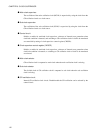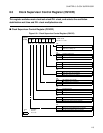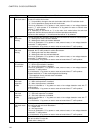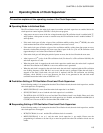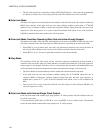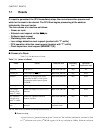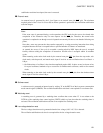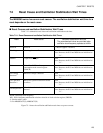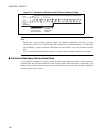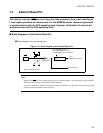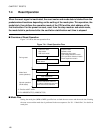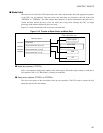
120
CHAPTER 7 RESETS
7.1 Resets
If a reset is generated, the CPU immediately stops the current execution process and
waits for the reset to be cleared. The CPU then begins processing at the address
indicated by the reset vector.
The four causes of a reset are as follows
• Power-on reset
• External reset request via the RST pin
• Software reset request
• Watchdog timer overflow
• Low voltage detection reset request (product with "T"-suffix)
• CPU operation detection reset request (product with "T"-suffix)
• Clock supervisor reset request (MB90367/T(S))
■ Causes of a Reset
Table 7.1-1 lists the causes of a reset.
●
Power-on reset
A power-on reset is generated when the power is turned on. The oscillation stabilization wait times is fixed
to 2
16
oscillation clock cycles (2
16
/HCLK) (approx. 16.38 ms, oscillating at 4 MHz). When the oscillation
Table 7.1-1 Cause of a Reset
Reset Cause Machine clock Watchdog
timer
Oscillation
stabilization wait
Power-on At power on Main clock (MCLK) Stop Yes
External pin L level input to RST
pin Main clock (MCLK) Stop None
Software Write "0" to internal reset signal
generation bit (RST) of low-power
consumption mode control register
(LPMCR)
Main clock (MCLK) Stop None
Watchdog timer Watchdog timer overflow Main clock (MCLK) Stop None
Low voltage
detection reset
(with "T"-suffix)
When low voltage (4.0 V ± 0.3 V) is
detected
Main clock (MCLK) Stop None
CPU operation
detection reset
(with "T"-suffix)
When CPU operation detection
counter overflows
Main clock (MCLK) Stop None
Clock supervisor
reset
When failure of main clock/subclock is
detected
Internal CR
oscillation clock
Stop None
MCLK: Main clock (oscillation clock frequency divided by 2)



